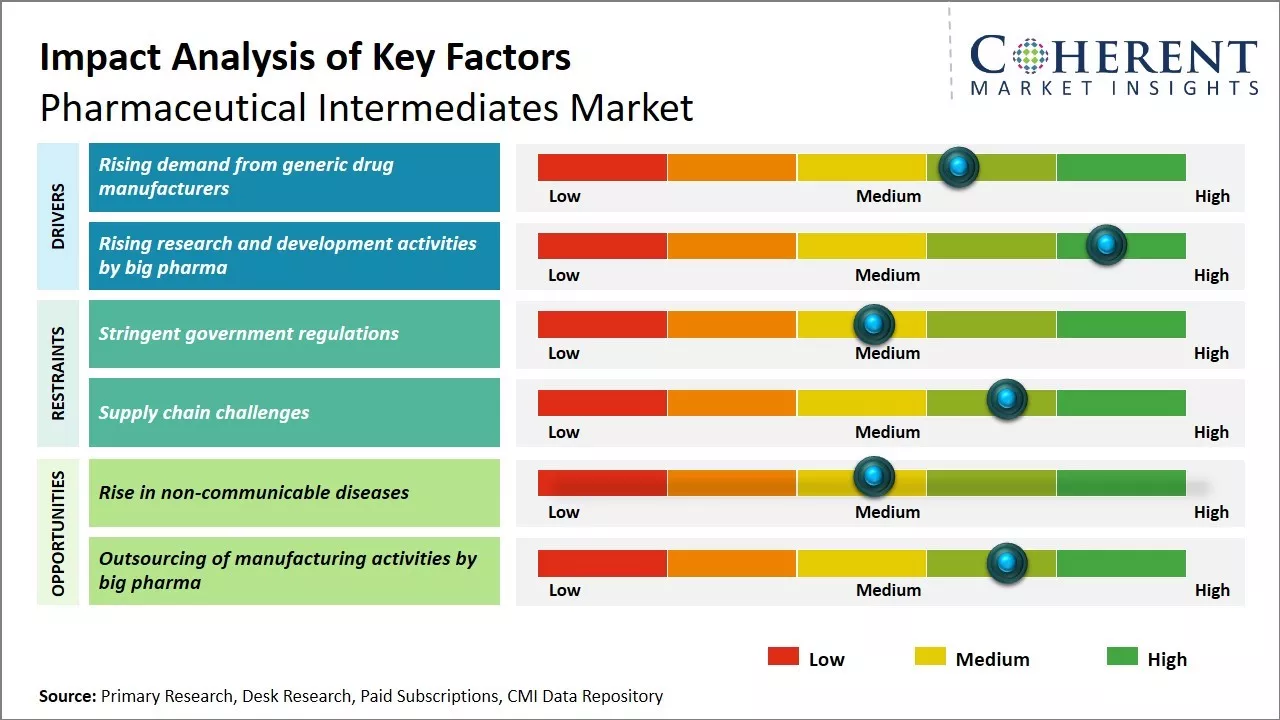The pharmaceutical intermediates market is estimated to be valued at USD 47.30 Bn in 2025 and is expected to reach USD 82.70 Bn by 2032, growing at a compound annual growth rate (CAGR) of 8.3% from 2025 to 2032.

To learn more about this report, Request sample copy
The pharmaceutical intermediates market is expected to witness significant growth over the forecast period. The demand for pharmaceutical intermediates is rising mainly owing to the increasing prevalence of diseases across the globe and growing need for medicines and drugs. The major factors driving the growth of this market include rising spending on healthcare worldwide coupled with the increasing consumption of generic drugs. Additionally, the growing production of active pharmaceutical ingredients (APIs) is also augmenting the demand for pharmaceutical intermediates. However, stringent regulations for the manufacturing and processing of pharmaceutical intermediates may hamper the growth of this market to some extent over the next few years.
Rising demand from generic drug manufacturers
The demand for pharmaceutical intermediates is being driven strongly by generic drug manufacturers. Over the past decade, the generic drug market has witnessed tremendous growth as many blockbuster drugs have lost their patent protection. This has paved the way for many generic versions of the original brand name drugs to be introduced in the market at much lower price points. Generics account for over 80% of the total prescriptions filled in major pharmaceutical markets today. However, the production of generic drugs requires large quantities of pharmaceutical intermediates which serve as the building blocks and raw materials. Most generic drug manufacturers do not have in-house capabilities to produce these intermediates and hence rely significantly on dedicated pharmaceutical intermediate producers.
Joining thousands of companies around the world committed to making the Excellent Business Solutions.
View All Our Clients